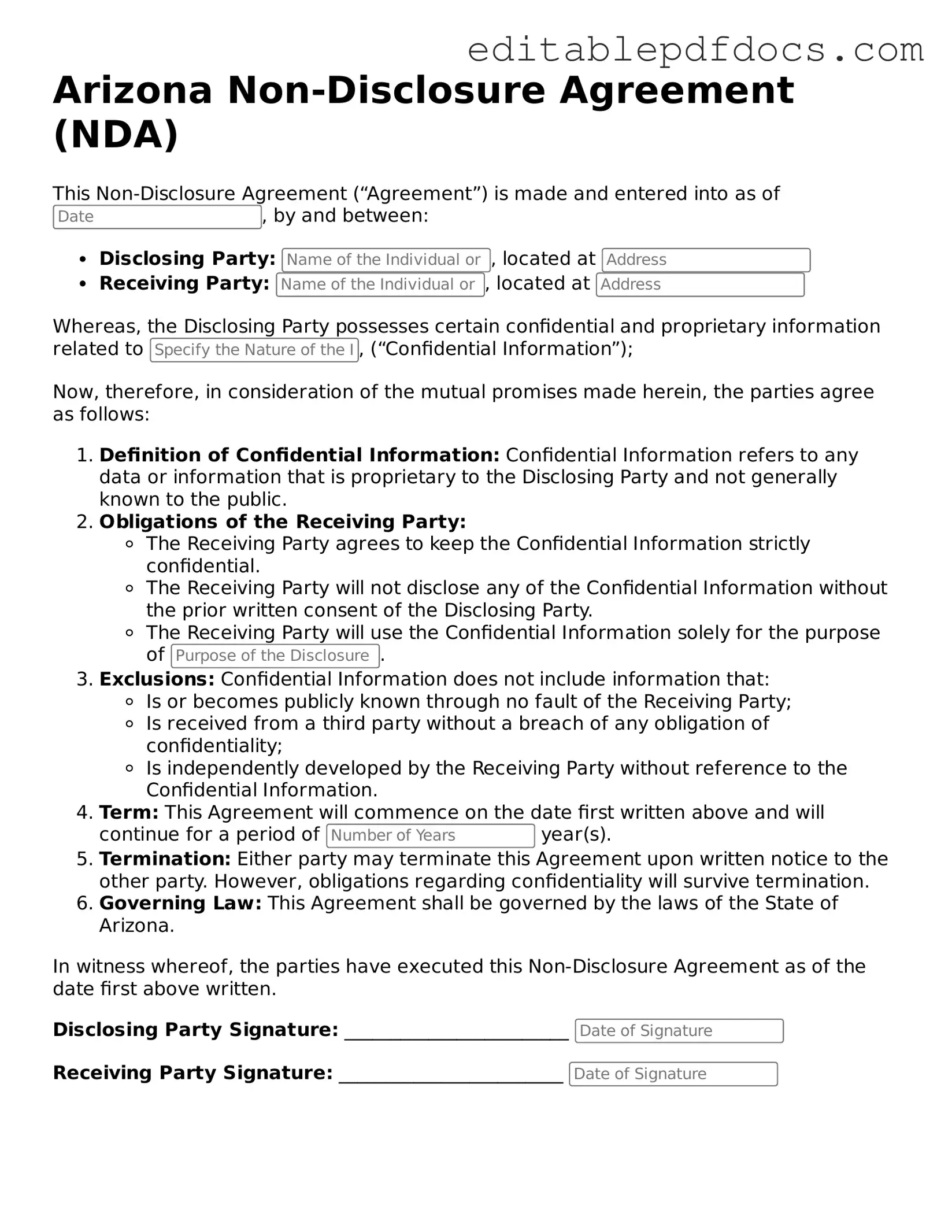Filling out an Arizona Non-disclosure Agreement (NDA) can be a straightforward process, but many individuals make common mistakes that can lead to complications down the line. Understanding these pitfalls can help ensure that the agreement is both effective and legally binding.
One frequent mistake is failing to clearly define the confidential information. Without a precise definition, the scope of what is considered confidential can become ambiguous. This ambiguity can lead to disputes later, as parties may have different interpretations of what information is protected.
Another common error is neglecting to specify the duration of the confidentiality obligation. Parties often assume that confidentiality lasts indefinitely, but this is not always the case. Clearly stating the time frame helps set expectations and provides clarity for both parties involved.
Some individuals also overlook the importance of including all relevant parties in the agreement. If a party that has access to confidential information is not included in the NDA, they may inadvertently disclose sensitive information without facing any legal consequences. Ensuring all necessary parties are listed is crucial for comprehensive protection.
Additionally, people sometimes forget to include the consequences of a breach. An NDA should outline what will happen if one party violates the agreement. This could involve legal action or financial penalties. Without these provisions, the agreement may lack the necessary deterrent effect.
Another mistake is using vague language that can lead to misinterpretation. Legal documents require precision. Phrases that are open to interpretation can create loopholes, making it difficult to enforce the NDA if a breach occurs.
Lastly, individuals often fail to seek legal advice before signing the agreement. While it may seem unnecessary, consulting with a legal expert can provide valuable insights. A professional can help identify potential issues and ensure that the NDA meets all legal requirements, ultimately safeguarding the interests of all parties involved.
